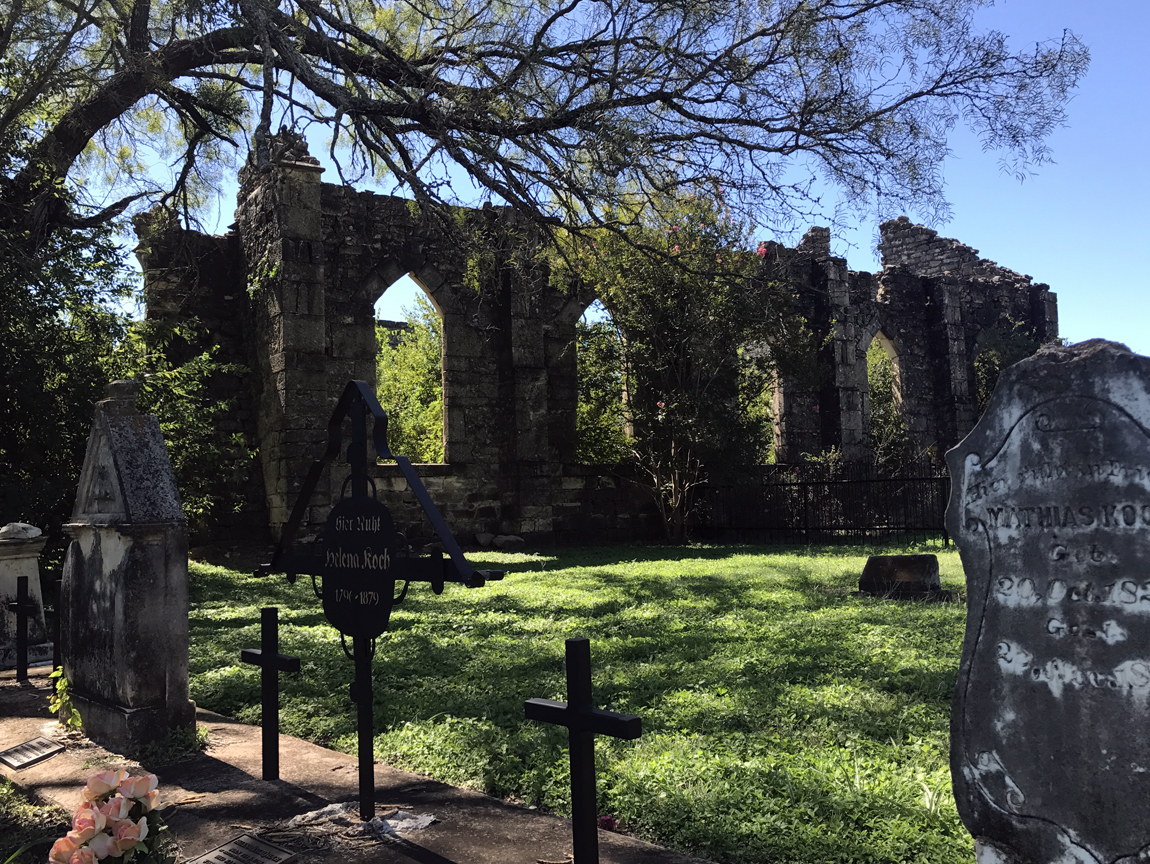

(references from Legends of America)
The fourth of the original colonies founded by Henri Castro is a townsite referred to as Old D’Hanis, a tiny community which lay about 1 ½ miles east of today’s D’Hanis. It was founded in 1847 by 29 families and was named for Guillaume (William) D’Hanis, a manager of Castro’s colonization company.
Each colonist was given a town lot and deeded a 20-acre farm. The European-style rock homes associated with the Alsace colonists were not among the first structures. Rather, with building materials in short supply, the first homes were rugged shelters made of mesquite pickets and thatch. Another small structure to serve as a Catholic Church was built in the middle of the village.
In 1849, the U.S. Army began to build Fort Lincoln about 2 ½ miles to the northwest of the village (on FM 1796), and that gave employment to some of the settlers as well as providing protection from Indian raids. South of Fort Lincoln, another small town was formed and called Seco Settlement. Some D’Hanis residents moved to that community, as the fort provided more protection, and there they built a school, homes, and several small businesses.
By 1850, the D’Hanis community consisted of about 20 homes. By 1854, a post office had been established, and the town became a stage stop on the San Antonio-Rio Grande Road. In 1853, when the town had become a mission parish, Saint Dominic Catholic Church was built of limestone and timber hauled by ox-wagon from the Medina River. In 1868, the first resident pastor arrived, and in the 1870s, two nuns of the Sisters of Divine Providence taught school in D’Hanis. This original D’Hanis settlement continued to prosper, and by 1881, it consisted of two stores, a dance hall, the large Catholic Church, and mineral well baths.
But change was coming, as, in 1881, the Galveston, Harrisburg & San Antonio Railway (the first part of the Southern Pacific Transportation Company) came through Medina County and built a depot 1 1/2 miles west of the settlement. As a result, most citizens, the post office, and businesses moved closer to the depot, and what was the original D’Hanis became known as “Old D’Hanis,” while the newly established site was referred to for a time as “New D’Hanis.” Within a very few years, the only remnants of the original townsite were its cemetery (whose earliest burial dates that of a child in 1847) and the church, which burned around 1912.
New D’Hanis was just south of the Seco Settlement that had formed around Fort Lincoln, but, with the frontier line advancing farther westward, the fort closed in 1852. The buildings remained intact and for a time were used as a Texas Rangers headquarters; however, eventually, the barracks were torn down and transformed into residences at Seco Settlement, and the hospital building was used as a private home. This community and its school, the Seco School, continued to exist until the 1940s. Although it was a separate town, today it is a part of D’Hanis.
In 1883, the D’Hanis Brick and Tile Company was founded. To this day, it continues to operate in this small town, making brick and tile “the old-fashioned way,” according to Legends of America, adding, “The bricks are made from local clay found in the area and sent all over the world.” These bricks are also found in abundance in the business buildings and homes in D’Hanis.
The town of “New D’Hanis” soon boasted four general stores, one saloon, a flour and grist mill, and two hotels. One of those hotels was the J.M. Koch Hotel, established in 1898 to serve railroad travelers. It was rebuilt in 1906 of local brick, and it continues to operate today as a bed and breakfast. In 1908, St. Anthony’s School was built, and the D’Hanis News – later renamed the D’Hanis Star – began publication and continued until 1923.
A second brick factory, Seco Pressed Brick, was established in 1910 – eventually to be incorporated with D’Hanis Brick and Tile Company – and, in that year, the D’Hanis Independent School District was formed. After losing their church to fire, the congregation of the old D’Hanis St. Dominic’s Church began to build Holy Cross Church in New D’Hanis, and it was completed in 1914. Our Lady Queen of Peace, a second Catholic Church, was built in 1924 for the Mexican-American Catholic citizens. D’Hanis State Bank opened in 1916 and continued to operate in its original location with its authentic, old-world architecture until it was destroyed by a tornado on October 30, 2015.
By 1930, the estimated population of D’Hanis was around 270. And, despite several disasters that have hit the town over the years – a number of floods (the most recent being in 2007), a fire that badly damaged the Holy Cross Church in 1963, and the tornado that destroyed the historic bank – today, D’Hanis boasts around 550 residents, a thriving school, and several successful businesses. Bill & Rosa’s Steakhouse operates in an old lumber company, and remote banking is provided in a spot in the original D’Hanis State Bank building. (CNB leases an area in the front of that building from its owner, Larry Klekar, to provide ITM [remote services] to the citizens of D’Hanis.) And, of course, the world-famous D’Hanis Brick and Tile Company continues to operate.